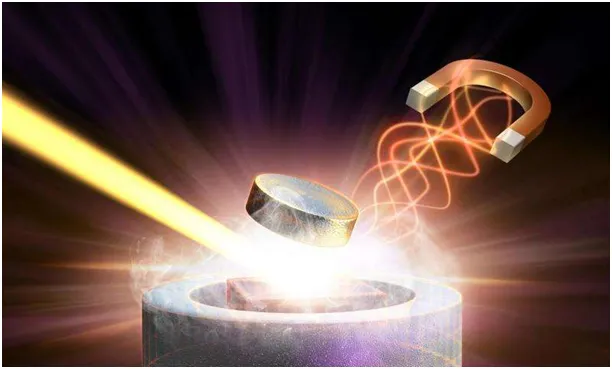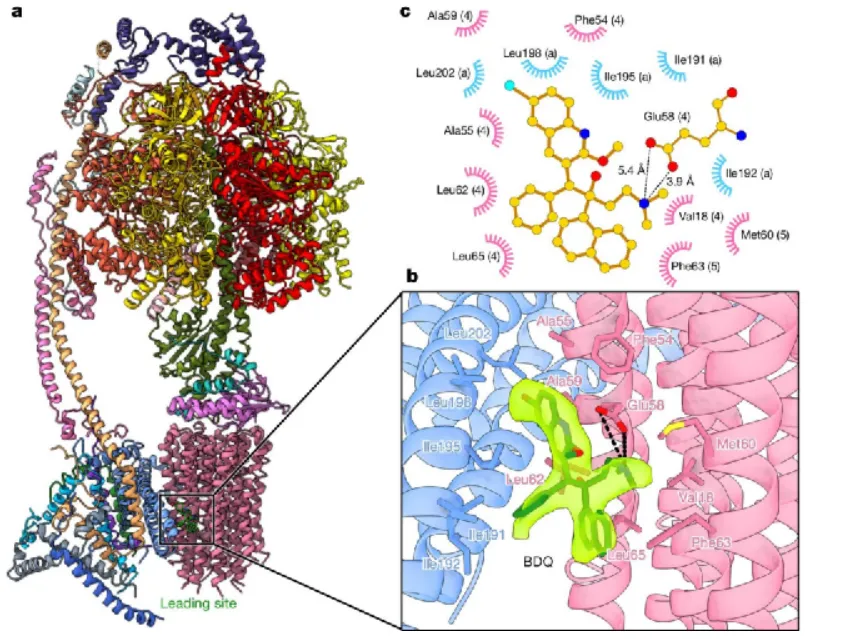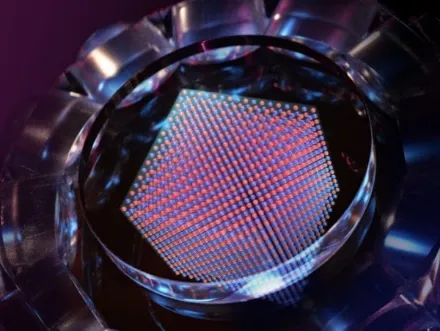Weekly Advanced Technologies〔49〕

Weekly Advanced Technologies〔49〕| Chinese Research Team Develops a Solar-Powered Ultralight Micro Aerial Vehicle | Chinese Scientists Discover Novel High-Temperature Superconductor
Endurance is closely tied to the "vitality" of drones, and harnessing solar energy is a pivotal avenue for achieving extended flight durations. The research team at Beihang University in Beijing has made a breakthrough by creating a solar-powered micro-drone that weighs a mere 4.21 grams. This feat was accomplished through the integration of a novel electrostatic motor, developed in-house, which enables the drone to maintain continuous flight solely on natural sunlight.
The scientific research team at Fudan University has achieved a significant breakthrough by successfully cultivating three layers of nickel oxide through the application of high-pressure optical floating zone technology. This accomplishment has validated pressure-induced bulk superconductivity within nickel oxide, exhibiting a superconductor integral number of 86%. This discovery signifies the emergence of yet another novel high-temperature superconductor.
Based on the weekly diary of technology provided by the daily list of the NCSTI online service platform, we launch the column "Weekly Advanced Technologies" at the hotlist of sci-tech innovation. Today, let's check out No.49.
1. Chinese Research Team Develops a Solar-Powered Ultralight Micro Aerial Vehicle

Endurance is closely tied to the "vitality" of drones, and harnessing solar energy is a pivotal avenue for achieving extended flight durations. The research team at Beihang University in Beijing has made a breakthrough by creating a solar-powered micro-drone that weighs a mere 4.21 grams. This feat was accomplished through the integration of a novel electrostatic motor, developed in-house, which enables the drone to maintain continuous flight solely on natural sunlight.
The research team at Beihang University has successfully developed a solar-powered micro drone weighing only 4.21 grams by utilizing a new type of electrostatic motor independently developed by them, achieving sustained flight powered solely by natural light. Relevant findings were published in the international academic journal Nature on July 18.
Professor Qi Mingjing's team from the School of Energy and Power Engineering at Beihang University has proposed a new electrostatic actuation scheme. They have developed a micro electrostatic motor characterized by low rotational speed, minimal heat generation, and high efficiency, which reduces heat loss in the power system and efficiently converts the electrical energy generated by solar cells into kinetic energy. This achievement enables micro aerial vehicles to take off and sustain flight solely powered by natural light. The team has specially developed an ultra-lightweight high-voltage power converter weighing just 1.13 grams, which boosts the voltage generated by solar cells from approximately 4.5 volts to 9000 volts, thereby creating an electrostatic system.
After further development, the new drone motor technology is expected to be applied in emergency rescue operations, narrow space detection and other similar scenarios, said Professor Yan Xiaojun, one of the lead researchers of the study.
2. Chinese Scientists Discover Novel High-Temperature Superconductor

The scientific research team at Fudan University has achieved a significant breakthrough by successfully cultivating three layers of nickel oxide through the application of high-pressure optical floating zone technology. This accomplishment has validated pressure-induced bulk superconductivity within nickel oxide, exhibiting a superconductor integral number of 86%. This discovery signifies the emergence of yet another novel high-temperature superconductor.
Nickel oxide is considered as a pivotal candidate in the pursuit of high-temperature superconductivity. In a significant breakthrough, Professor ZHAO Jun's team has successfully synthesized a high-quality, three-layer nickel oxide single crystal sample. This sample demonstrates zero resistance and a complete antimagnetic Meissner effect at temperatures below the superconducting critical threshold. Notably, its superconducting coherence number closely aligns with that of copper oxide high-temperature superconductors, providing robust evidence of the superconducting properties inherent to nickel oxides.
Professor Zhao Jun's team employed high-pressure optical floating zone techniques to grow a large number of samples. Through continuous exploration and summarization of patterns, they ultimately succeeded in synthesizing a pure-phase, three-layer nickel oxide single crystal sample. Additionally, the research revealed that the three-layer nickel oxide exhibits exotic metallic properties and unique interlayer coupling behaviors, providing new perspectives and platforms for understanding the mechanisms of high-temperature superconductivity.
3. Nature Communications丨The SG-II Laser Facility "Unlocks" the Mystery of Electron Origins in Complex Celestial Bodies

Artistic depiction of the random acceleration process of electrons generated in the laboratory. The red spheres represent the high-energy electrons being accelerated, the white curves signify the random trajectories of these accelerated electrons, and the chaotic background structures represent the large-scale turbulent plasma in celestial bodies.
Recently, a collaborative effort by the National Astronomical Observatories of the Chinese Academy of Sciences, Peking University, the Institute of Physics of the Chinese Academy of Sciences, Shanghai Jiao Tong University, and others, has achieved for the first time the random acceleration of electrons within large-scale kinetic turbulent plasma at the SG-II facility in Shanghai. This breakthrough has unveiled the mystery of the generation of high-energy electrons in complex celestial environments.
The enigma of the origin of energetic particles in celestial bodies, listed among the 125 scientific questions posed by the journal Science, remains a conundrum. Astrophysicists have advanced a range of mechanisms, including magnetic reconnection acceleration, shockwave acceleration, and random acceleration, to elucidate the production mechanisms of energetic particles across diverse celestial environments.
This time, the researchers utilized the large laser device “Shenguang II” to generate supersonic convective plasma in the laboratory, and used the beam velocity anisotropy to induce the generation and development of electromagnetic Weber instability, which in turn induced the formation of large-scale plasma turbulent structures. Further analysis reveals that the power spectrum of the disordered structure is highly consistent with the kinetic turbulence spectrum, and the experiment also simultaneously measures the high-energy electron power-law spectrum from different angles.
Through theoretical simulations, the researchers found that the high-energy electrons mainly come from the energy gain obtained from multiple “collisions” between hot electrons and magnetic islands in turbulent plasma, i.e. turbulent random acceleration. The above results are of great significance for exploring particle acceleration and high-energy radiation in the complex environment of celestial bodies.
4. Nature丨How to Design New Antituberculosis Drugs?

Cryo-electron microscopic structure of human-derived ATP synthase incorporating bedaquiline
Tuberculosis (TB), an infectious disease caused by Mycobacterium tuberculosis, is one of the major public health problems of global concern. Bedaquiline, an inhibitor targeting the ATP synthase of Mycobacterium tuberculosis, is currently classified by the World Health Organization as the drug of choice for long-term treatment regimens of rifampicin-resistant tuberculosis and multidrug-resistant tuberculosis. However, bedaquiline poses an increased risk of arrhythmias in the patient's heart due to its interaction with the potassium channel protein hERG, and it exhibits potential cross-inhibitory activity against human-derived ATP synthase.
For this purpose, GONG Hongri, RAO Zihe, and their collaborators at the College of Life Sciences, Nankai University, conducted a series of studies. They utilized a "gene knock-in, gene knockout, gene overexpression" strategy combined with affinity chromatography and gel filtration chromatography protein purification methods to obtain uniformly stable and active ATP synthase protein samples from Mycobacterium tuberculosis. They resolved the high-resolution cryo-EM structures of bedaquiline and its most representative derivative, TBAJ-587. The structures revealed that TBAJ-587 binds to the ATP synthase of Mycobacterium tuberculosis in the same manner as bedaquiline. Both TBAJ-587 and bedaquiline primarily interact with the ATP synthase of Mycobacterium tuberculosis through groups A and D, ultimately preventing ATP synthesis and achieving the goal of "starving" the Mycobacterium tuberculosis.
They further discovered that both bedaquiline and TBAJ-587 exhibit cross-reactivity with human-derived ATP synthase and resolved the cryo-EM structure of human-derived ATP synthase bound to bedaquiline. Analysis revealed that TBAJ-587, which was redesigned based on groups B and C in bedaquiline, merely reduced the risk of arrhythmias caused by interaction with the hERG protein. Optimizing the redesign of group A is necessary to potentially reduce interactions with human-derived ATP synthase, thereby mitigating potential health risks in clinical treatment. This research holds significant implications for both basic research and clinical translation in tuberculosis, and it will promote the further optimization of bedaquiline and the development of similar or even more effective new drugs.
5. Nature Communications丨Advancing Towards the Lunar South Pole Plains: Pioneering Pathways for Chang'e VII

Map of the distribution of plains landforms in the south polar region of the Moon
The polar region of the Moon, abundant in water ice and other valuable substances, has become a focal point for lunar exploration and scientific research. Over the next few years, various space agencies worldwide, including China with its Chang'e VII mission slated for 2026, plan to conduct extensive remote sensing, landing, roving, and manned exploration activities in the lunar south pole region. However, remote sensing images and terrain data reveal that the Moon's South Pole is characterized by numerous impact craters and rugged terrain, devoid of the expansive lunar sea plains that were previously favored for landing sites. This challenging landscape poses significant obstacles to successful landings and comprehensive environmental and resource surveys in this region.
Recently, the research team of QIAO Le from the Center for Planetary Sciences, Institute of Space Sciences, Shandong University, in collaboration with international and domestic scientists, has conducted a comprehensive study of the lunar Antarctic region using high-resolution topography and other exploration data. This research has identified over 800 plain landforms, collectively spanning more than 46,000 square kilometers, which represents approximately 13% of the total area of the Antarctic region.
Presently, numerous candidate landing zones for lunar polar exploration missions concentrate on high mountaintops. However, this study introduces a novel approach, highlighting plains as potential sites for future lunar polar water ice exploration. Notably, the light time ratio in certain areas of these plains can reach approximately 30%, offering a viable energy source for landing and exploration activities. Furthermore, by examining lunar surface measurements and sampling of exotic basin spallation within these plains, it is anticipated that the formation age of the basins in the source region can be determined. This information can subsequently help constrain the early impact flux of the Moon.
6. Forge the "Tian Yuan" Quantum Simulator: the Pioneering Verification of Antiferromagnetic Phase Transition in the Fermionic Hubbard Model

Schematic diagram of the “Tianyuan” quantum simulator. The red and blue spheres represent atoms with opposite spins, which are interlaced in three dimensions to form an antiferromagnetic crystal. The atoms are imprisoned by the optical lattice in a glass vacuum cavity.
Quantum materials with strong correlations, represented by high-temperature superconductors, are set to drive the advancement of future technology. However, the underlying physical mechanisms behind these novel quantum materials remain unclear. Among them, the Fermionic Hubbard model is considered one of the representative models that may describe high-temperature superconducting materials. The challenges in its research come from two aspects. Firstly, the model does not have strict analytical solutions in two-dimensional and three-dimensional cases. Secondly, the computational complexity is extremely high, making it impossible for even supercomputers to conduct effective numerical simulations.
For this purpose, scientists from the University of Science and Technology of China, including PAN Jianwei, CHEN Yu'ao, YAO Xingcan, and DENG Youjin, constructed the "Tian Yuan" ultracold atom quantum simulator to solve the Fermionic Hubbard model. By surpassing the simulation capabilities of classical computers, they have for the first time verified the antiferromagnetic phase transition within this system. This lays the foundation for further solving the Fermionic Hubbard model and obtaining its low-temperature phase diagram, demonstrating the significant advantage of quantum simulation in addressing important scientific problems that are beyond the reach of classical computers.
Columnist: Li Xiaoxiao
Translator: Liu Kaiyuan